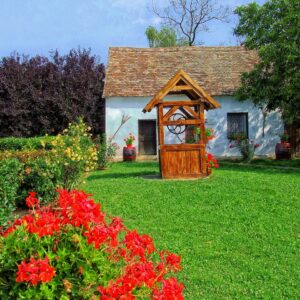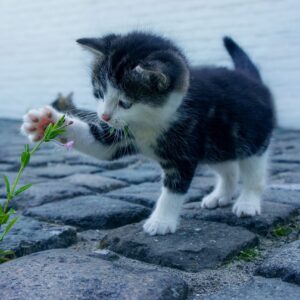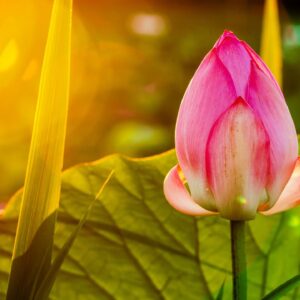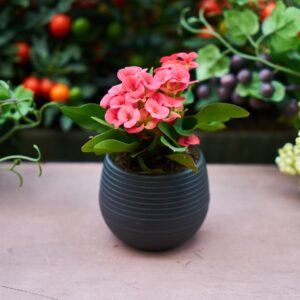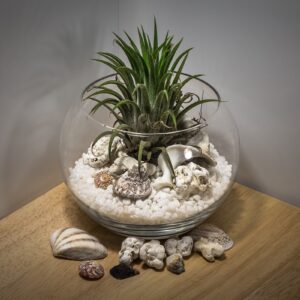Are you looking for a way to liven up your home decor but don’t want to break the bank? Look no further than houseplants! Not only do they add a touch of greenery to any space, but they also have numerous health benefits, such as improving air quality and reducing stress. But with so many different design styles out there, it can be difficult to know which plants will work best for your space. That’s where we come in. In this article, we’ll guide you through pairing houseplants with different design styles, from minimalist to bohemian to eclectic. So whether you’re a plant newbie or a seasoned green thumb, you’ll be able to find the perfect houseplant decor for your home.
Understanding Your Design Style
Discovering your unique taste and preferences is key to creating a space that truly feels like home. When it comes to houseplant decor, it’s important to understand your design style in order to choose the right plants that complement your space.
Are you a minimalist or a maximalist? Do you prefer clean lines and neutral colours or bold patterns and bright hues? Your design style will guide you in choosing plants that fit your aesthetic.
For minimalist design styles, incorporating plants into industrial spaces can add a touch of warmth and softness. Choose simple, low-maintenance plants like snake plants or ZZ plants that don’t require a lot of attention.
For maximalist design styles, the more plants the better! Mix and match different types of plants with different textures and colors to create a lush, jungle-inspired look. Consider hanging plants or using plant stands to add height and dimension to your space.
No matter your design style, there’s a plant out there that will fit perfectly into your home decor.
Choosing the Right Houseplants for Your Space
You’ll want to make sure the greenery you select complements your space like a perfect puzzle piece, adding just the right amount of natural beauty to your home.
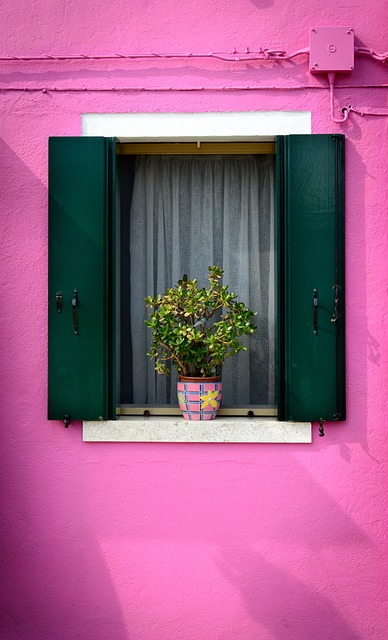
When choosing houseplants, consider the amount of light your space receives and the level of care you’re able to provide. Some plants, like succulents and snake plants, require very little water and can thrive in low light conditions, making them perfect for busy individuals or those with less-than-ideal lighting situations.
In addition to their aesthetic appeal, houseplants also provide numerous benefits to your space and overall well-being. Not only do they help purify the air, but they can also reduce stress and boost productivity.
Caring for indoor plants can also be a meditative and rewarding experience, as you watch your greenery grow and thrive under your care.
With so many different types of houseplants available, there’s sure to be a perfect match for your space and lifestyle.
Incorporating Plants into Minimalist Design
If you want to add a touch of natural beauty to your minimalist space, there’s a simple solution that can enhance your decor without overpowering your style. Incorporating plants into minimalist design can create a fresh and calming atmosphere.
Start by choosing minimalist planters that complement your space. Opt for natural materials such as wood or ceramic in neutral colors like white or black. This will create a cohesive look without distracting from your overall design.
When it comes to plant placement, consider using plants as statement pieces. Place a large, leafy plant in a corner to draw the eye and add some greenery to the space. Alternatively, use small potted plants as accents on shelves or tables.
Keep in mind that less is often more in minimalist design, so choose a few plants that will make a big impact rather than cluttering your space with too many. By incorporating plants into your minimalist design, you can create a calm and inviting space that combines natural beauty with modern style.
Creating a Cozy Bohemian Atmosphere with Plants
To create a cozy bohemian atmosphere in your space, surround yourself with lush greenery that cascades over shelves and hangs from the ceiling, bringing a sense of natural wonder and serenity to your surroundings.
Bohemian design is all about incorporating unique and eclectic elements into your space, and plants are a perfect way to do just that. Mix and match different types of plants in DIY planters that reflect your personal style, and create unique plant arrangements that showcase your creativity.
When choosing plants for your bohemian oasis, consider incorporating plants with interesting textures and patterns, like the snake plant or fiddle leaf fig. These plants not only add visual interest, but they also purify the air, creating a healthier living space.
Don’t be afraid to mix and match different types of plants, like succulents and trailing ivy, to create a lush and vibrant atmosphere. With the right combination of plants and DIY planters, you can transform any space into a cozy bohemian haven.
Using Plants to Enhance Eclectic Design
Enhancing your eclectic style with the natural beauty of plants can bring a sense of harmony and balance to your space, allowing you to express your unique personality through a combination of unconventional elements.
One way to achieve this is by mixing and matching different plant styles. You can combine a tall, statement plant with smaller, more delicate ones to create a visually interesting display. A monstera plant with its large, tropical leaves can be paired with a trailing ivy or a spider plant for contrast. Alternatively, you can group plants with similar leaf shapes or colors for a cohesive look.
Playing with texture is another way to use plants to add depth to your decor. Plants with different textures, such as the fuzzy leaves of a calathea or the smooth, glossy leaves of a rubber plant, can create an interesting contrast against other decor elements.
You can also use plants to fill empty spaces or to draw attention to specific areas of your room. For example, hanging plants can draw the eye upward and make a room feel taller, while a grouping of plants on a shelf can add interest to an otherwise plain wall.
With a little creativity, plants can become an integral part of your eclectic decor, adding both beauty and personality to your space.
Frequently Asked Questions
How often should I water my houseplants?
To keep your houseplants healthy and thriving, it’s important to water them regularly, but not too much. The best watering techniques depend on the type of plant and its specific needs.
As a general rule, you should water your plants when the top inch of soil feels dry to the touch. Signs of overwatering include yellowing leaves, wilting, and a soggy or mushy soil. On the other hand, signs of underwatering include dry, brown, or crispy leaves, as well as soil that pulls away from the edges of the pot.
To avoid these problems, make sure you’re using the right potting mix, providing adequate drainage, and adjusting your watering schedule as needed.
With these tips in mind, you can keep your houseplants looking their best all year round.
What are some common pests that can affect houseplants?
If you’re a plant parent, you may have encountered unwanted guests like spider mites, mealybugs, or scale insects. Prevention is key to avoiding these pests from infesting your plants.
Keep a close eye on your plants, inspecting them regularly for any signs of bugs or larvae. Also, be mindful of overwatering as it can create a favorable environment for pests.
If you do find pests, treatment options include using insecticidal soap, neem oil, or a mixture of water and rubbing alcohol. Quarantine the affected plant to avoid spreading the infestation to other plants.
Can I use artificial plants instead of real ones for decoration?
Imagine you’re an interior decorator from the past and you’ve just stumbled upon the idea of using artificial plants for decoration. You might be intrigued by the concept, but before you commit to it, you should consider the pros and cons.
On one hand, artificial plants require no maintenance, won’t attract pests, and can be used in spaces with low light. On the other hand, they lack the natural beauty and health benefits of real plants, can be expensive, and may not be as environmentally friendly.
When it comes to cost comparison, artificial plants may seem cheaper initially, but they may need to be replaced more frequently than real plants.
Overall, using artificial plants for decoration can be a convenient option, but it’s important to weigh the pros and cons before making a decision.
How can I incorporate large plants into a small space?
Looking for creative plant arrangements to incorporate large plants into a small space?
Maximize your vertical space by adding high shelves or hanging planters to display your greenery. Choose plants with narrow or trailing stems like spider plants, pothos, or philodendrons to create a lush display without taking up too much floor space.
You can also use plant stands or pedestals to elevate your larger plants and create a visual focal point in your room.
Get creative with your plant placement and don’t be afraid to experiment with different arrangements until you find the perfect fit for your space.
What are some low-maintenance houseplants that require minimal care?
Looking for low-maintenance houseplants that require minimal care? You’re in luck!
There are plenty of options that will thrive in small apartments and low light conditions. Some of the best low light plants include the snake plant, pothos, ZZ plant, and peace lily.
These plants are perfect for those who are just starting out with houseplants or who have a busy lifestyle. Not only do they add a touch of green to your space, but they also have air-purifying qualities.
Plus, with their low maintenance needs, you won’t have to worry about constantly tending to them. So, why not add some indoor plants to your small apartment and reap the benefits of a greener space?
Conclusion
Congratulations! You’re now equipped with the knowledge to pair houseplants with different design styles. You understand the importance of choosing plants that complement your design style and how to incorporate them into your space.
You know how to enhance a minimalist design with plants, create a cozy bohemian atmosphere, and use plants to add character to an eclectic design. Imagine your home as a garden, where each room is a different flower bed.
You carefully choose the plants that will thrive in each bed and complement the overall aesthetic of your garden. In the same way, you can carefully choose the plants that will thrive in each room of your home and complement the overall design style.
With the right plants, you can transform your home into a lush and vibrant space that reflects your personality and style. So go ahead, grab your gardening gloves, and get ready to create the perfect houseplant decor for your home!
